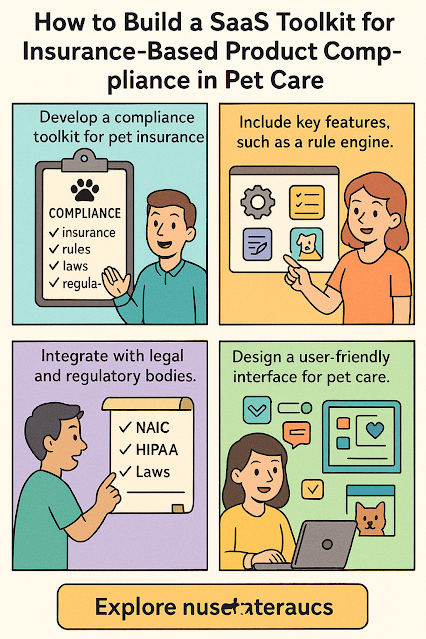How to Build a SaaS Toolkit for Insurance-Based Product Compliance in Pet Care
In the fast-evolving world of pet care, more companies are developing insurance-backed products such as veterinary plans, microchip-linked coverage, or accident reimbursement policies.
But with insurance comes regulation — and that’s where a SaaS compliance toolkit comes into play.
This guide explores how to build a Software-as-a-Service (SaaS) platform designed specifically to manage compliance for pet insurance-related products.
📌 Table of Contents
- Why Build a Compliance Toolkit for Pet Care?
- Core Features Your SaaS Should Include
- Legal and Regulatory Integrations
- UX/UI Considerations for Pet Industry Users
- Useful External Resources
🐾 Why Build a Compliance Toolkit for Pet Care?
Pet care is no longer limited to vet visits and food bowls — today’s pet owners are offered DNA tests, behavior tracking subscriptions, and even insurance-backed injury reimbursements.
Each of these services can intersect with legal requirements set by insurance bodies, animal welfare authorities, and data protection agencies.
A SaaS toolkit centralizes these compliance needs, helping businesses:
- Automate documentation workflows
- Keep up with multi-jurisdictional laws
- Prevent regulatory penalties
- Build trust with customers and insurers
⚙️ Core Features Your SaaS Should Include
To ensure your product is scalable and valuable, include these core modules:
- Policy Rule Engine: Define dynamic rules based on pet type, product, location, or insurer.
- Audit Logs: Timestamped logs for every compliance event (e.g., approvals, updates, deletions).
- Digital Signature & Consent Forms: Store consent for insurance terms or treatment policies.
- Pet Profile Management: Collect breed, vaccination, and treatment history tied to compliance triggers.
- Regulatory Alerts: Auto-notifications when state or federal laws change.
📜 Legal and Regulatory Integrations
You’ll need to stay aligned with agencies such as:
- NAIC (National Association of Insurance Commissioners)
- HIPAA (for any medical records management)
- FTC Pet Lemon Laws (relevant for breeders or pet shops)
APIs or compliance plug-ins can help monitor federal/state updates in real-time and log them into your platform’s dashboard.
🎨 UX/UI Considerations for Pet Industry Users
Your SaaS should not only function well but feel approachable to pet care staff, not just tech teams.
Design considerations include:
- Icons for different pet types (cats, dogs, exotic animals)
- Color-coded compliance statuses (e.g., green = valid, red = expired)
- Drag-and-drop insurance policy builder for resellers
Simple, user-friendly dashboards reduce training time and increase adoption rates among smaller pet shops or mobile vet clinics.
🔗 Useful External Resources
For further insights, regulations, and implementation examples, check out the resources below:
Explore Pet Industry Compliance — LivinfotVeterinary Insurance Compliance Tips — DoctorInfore
Pet Insurance Data Regulations — InfoParad
🎯 Final Thoughts
Building a SaaS toolkit for pet insurance compliance isn't just about satisfying legal requirements — it's a strategic move to future-proof your pet care services and build strong, long-term relationships with partners and customers alike.
By integrating intuitive dashboards, smart policy engines, and real-time regulation monitoring, your platform can serve as a trusted compliance backbone across the growing pet economy.
Start small, stay secure, and build smart.
Keywords: pet insurance compliance, SaaS for pet care, veterinary legal toolkit, insurance software, animal product regulation

